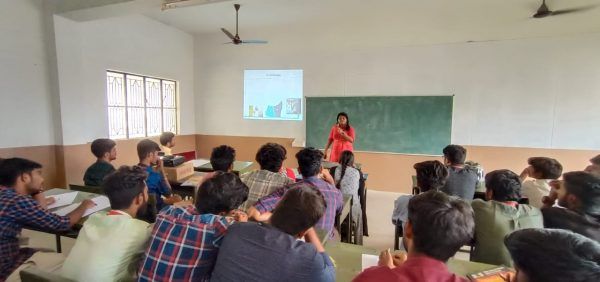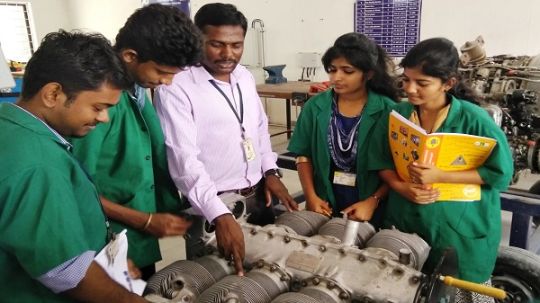department of aeronautical engineering
facilities
All the classrooms are spacious, well ventilated and equipped with WIFI facility, Newspaper stand and Glass Board. Besides all classroom are fitted with colour blinds to reduce the glare during ICT usage. Overhead Projector with UPS connection for uninterrupted power supply. One – third of classes are equipped with Smart board for the enhanced learning experience. All the classroom also provided with Notice board which displays latest programs and other information related to particular class



AIRCRAFT STRUCTURES LABORATORY
A state of the Aircraft Structures Laboratory includes test rigs that students use to study the structural analysis and design of an aircraft. The structures laboratory is used to enhance the learning experience of undergraduate students by encouraging them to undertake projects. In addition the structures lab provides facilities which can be used for specimen preparation and testing. The structures lab is set up for experimentation and testing of structural components. Several test frames have been designed and are available with actuators for testing of various structural components.


AERODYNAMICS LABORATORY
The wind tunnels are used for aerodynamic experimental research carried out by faculty members, graduate students and joint projects with the Industry as well as for teaching undergraduate laboratory courses. The uniqueness of the complex lies in the almost complete coverage of the relevant Mach number range for aerodynamic research. It consists of four tunnels: two in the incompressible subsonic range (M<0.3), one in the compressible transonic range (0.35<M<1.1), and one in the compressible supersonic range (1.6<M<3.5). The instrumentation includes: Balances, manufactured in-house, for measuring forces and moments, a Schliemann system for visualization of flow where density gradients exist, Hotwire anemometer and dynamic pressure transducers for high-rate measurement of velocity and pressure, respectively, at a point and Particle Image Velocity (PIV) for measurement of a velocity field in a plane.
AERO ENGINE MAINTENANCE LABORATORY
The Aero Engineering Maintenance Laboratory trains students in the operation and maintenance of Aircraft’s and Helicopters in terms of Structures, Systems and Engines. The students learn how to use the engine trend analysis for the planning of periodic inspection and maintenance of various components in such a way as to reduce downtime of flying vehicles, simulation and validation through Engine testing at various laboratories. After completing the lab the engineers will be familiar with Civil Aviation regulations of Light and Heavy Aircraft category as well as the relevant maintenance procedures for Aircraft and Helicopters.


AERODYNAMICS LABORATORY
To make a structural repair, the aircraft technician needs a good working knowledge of sheet metal forming methods and techniques. In general, forming means changing the shape by bending and forming solid metal. In the case of aluminum, this is usually done at room temperature. They are responsible for the maintenance and repair of aviation life support equipment, aircraft structures and related components. Aircraft Structures Technicians are skilled in metal and composite repair, refinishing, painting, machining and welding. The market for the Aircraft MRO sector is typically divided into four major segments, which include Airframe heavy maintenance and modification, Engine maintenance, Line maintenance and Component maintenance.
AIRCRAFT SYSTEMS LABORATORY
Aircraft Systems Labs are well equipped with the basic as well as state of the art technology – airframe NDT equipment’s, operational aileron movement system, brake operation system, working aircraft engine testing bench, etc. Working mock ups of all the aircraft air frame and propulsion (engine) system is available. The entire practical related to aircraft mechanical systems can be performed in our labs.


PROPULSION LABORATORY
A propulsion system is a machine that produces thrust to push an object forward. On airplanes, thrust is usually generated through some application of Newton’s third law of action and reaction. A gas, or working fluid, is accelerated by the engine, and the reaction to this acceleration produces a force on the engine. The Jet Propulsion Laboratory is a unique national research facility that carries out robotic space and Earth science missions. This lab helps to give exposure about to all kind of engine processes from all kinds of operations.
DEPARTMENT LIBRARY
Library is traditionally collection of books used for reading or study, or the building or room in which such a collection is kept. Our Department library contains 191 volumes of books in various streams
CD – 2872
E Books – 215
FD – 51
Project Report – 2170
Back Volumes – 1937
Ph.D Thesis – 17
BOG Reports – 22




